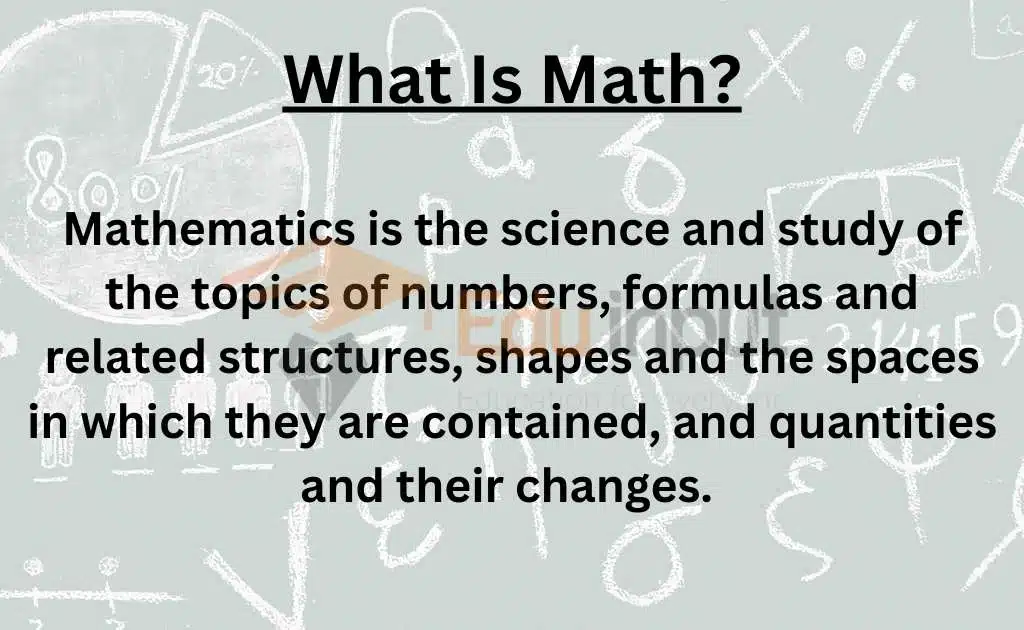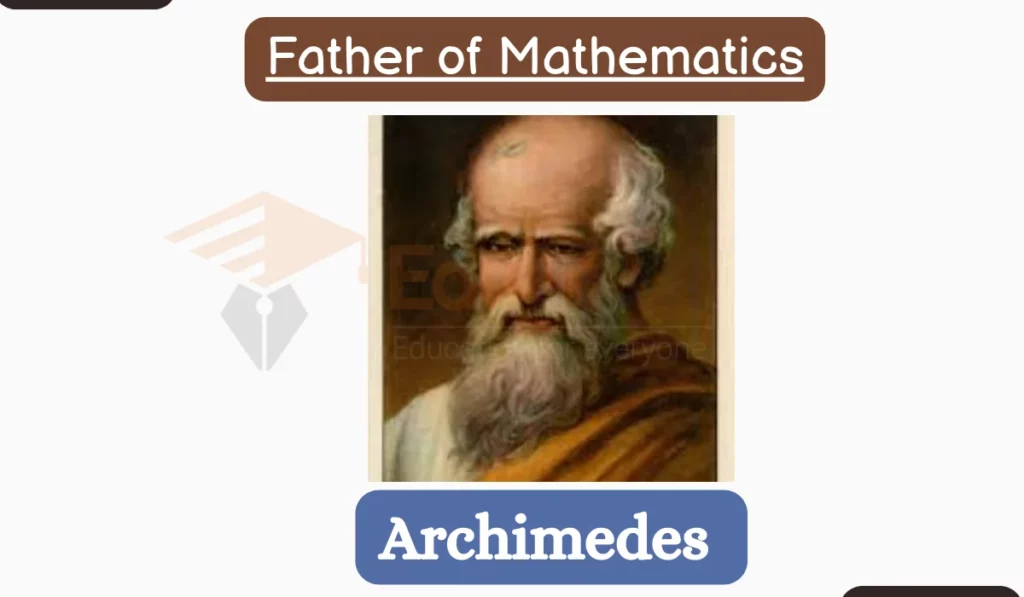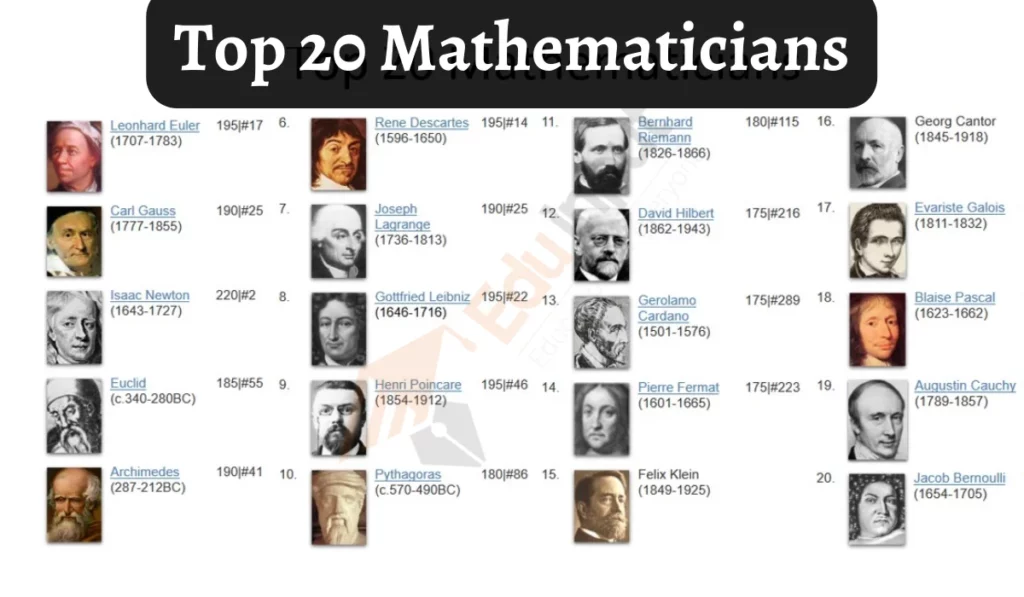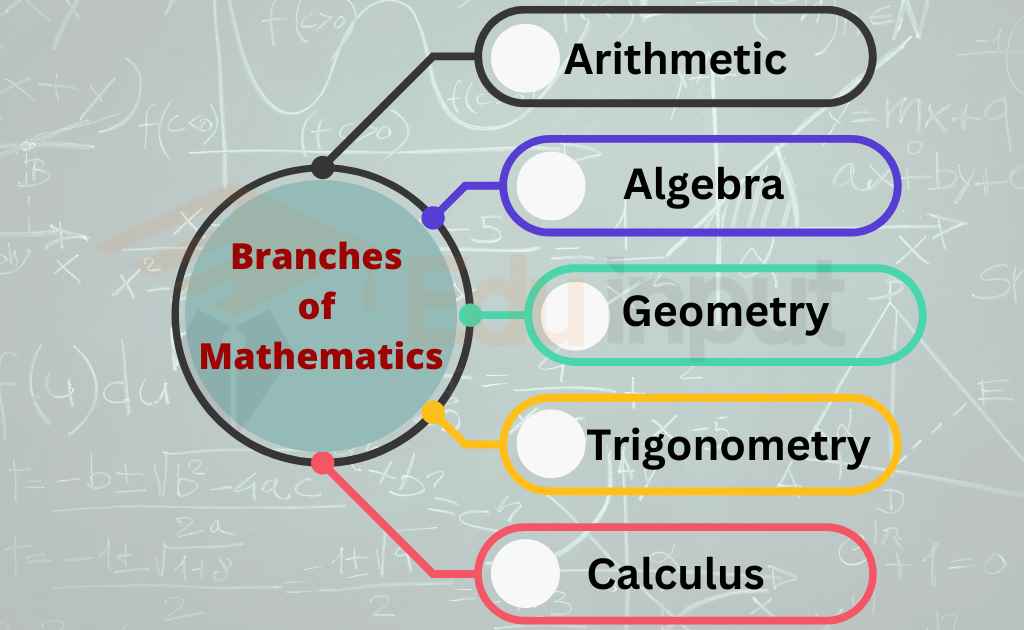What is Mathematics?

Mathematics is the study of structure, order, and relationships. Over time, the fundamental techniques of counting, measuring, and describing the shape of objects have evolved.
It studies quantity, structure, space, and change. By rigorous deduction from appropriately chosen axioms and definitions, mathematics involves finding patterns, formulating conjectures, and establishing truth.
The entities that are stipulated with certain properties called axioms include arithmetic, geometry, algebra, number theory, formulas, formulas, calculus, proofs, and abstractions from nature.
A mathematical proof consists of a succession of applications of rules that have already been proven, as well as some basic properties that are considered to be the true starting points of the theory.
Mathematics comes from the Greek word “Mathema” which means measure, ratio, and knowledge.
Who is the Father of Mathematics?
Ancient Greek mathematicians introduced mathematics to the world. Several topics from various parts of the world were contributed by mathematicians at the same time. Nobody is credited with inventing mathematics.
Archimedes is famous for being a Greek mathematician who is regarded as the father of mathematics. He is considered the Father of Mathematics for his significant contribution to the development of mathematics.
Notable inventions of Archimedes are His method to find the circumference of the circle by using the method of exhaustion to find the area of the circle and his use of the formula πr2 (the famous pi or pi) to calculate the area of the circle.

History of Mathematics
Mathematics has been part of the physical sciences for hundreds of years. Quantitative aspects of the life sciences have been assumed by it.
The history of mathematics deals with the beginnings of mathematical methods and how they were used in the past. The Egyptians did mathematics before the modern age, and the spread of knowledge, in this version.
The examples of their new mathematical developments were written down in a few places. The importance of citations is very important in mathematics and statistics. The basis for referencing mathematical research can be provided by them.
When presenting the results of a mathematician’s own publication, it is customary to cite the original work of that mathematician.
For purposes of taxation, commerce, and trade and also to record time and formulate calendars, the states of Mesopotamia, Akkad, and Assyria, as well as Ancient Egypt and the Levantine state of Ebla, began using arithmetic, algebra, and geometry from 3000 BC.
The history of Mesopotamian and Egyptian mathematics is based on the original documents written by the scribe. Although there are very few documents left in Egypt, these are all of a type and leave no doubt that Egyptian mathematics was, on the whole, elementary and profoundly practical in its orientation.
Mesopotamian mathematics was much more advanced than Egyptian mathematics. It had a combination of both writing and math, and it had a large number of clay tablets, which showed the mathematical achievements of a much higher order than those of the Egyptians.
The oldest copies of the Greek mathematical documents are in Byzantine manuscripts dating from the 10th century, and from the period before Alexander the Great, no Greek mathematical documents have been preserved except for fragmentary paraphrases.
This is completely different from the situation described in Egyptian and Babylonian documents.
The invention of printing has solved the problem of obtaining secure texts and has allowed historians of mathematics to concentrate their editorial efforts on the correspondence or the unpublished works of mathematicians.
Historians can only treat the major figures in detail for the period from the 19th century on, because of the exponential growth of mathematics. There is a problem of perspective when the period gets closer to the present.
The birth of mathematics was thought to have occurred among the ancient Greeks until the 1920s. What was known of earlier traditions, such as the Egyptian as represented by the Rhind papyrus (edited for the first time only in 1877).

Significance Of Mathematics In Sight Of Scientists
Mathematics has long been recognized as an essential and indispensable field of study. As it has a wide range of applications in diverse fields such as science, engineering, economics, and art.
Its significance has been acknowledged by numerous prominent scientists throughout history. Here are some views on the importance of mathematics, from Bertrand Russell’s famously skeptical quote to Gauss’s declaration that arithmetic is the queen of all mathematics.
- “The subject in which we never know what we are talking about, nor whether what we are saying is true”. (Betrand Russell-1901)
- “Mathematics is the queen of sciences and Arithmetic is the queen of all mathematics”. (Gauss)
- “Mathematics is an indispensable instrument of all physical research”. (Kant)
- “Mathematics is the gateway and key to all sciences”. (Bacon)
- “Mathematics is the language of physical sciences and certainly, no more marvelous language was created by the mind of man”. (Lindsay)
- “Mathematics is a way to settle in the mind a habit of reasoning”. (Locke)
- “Mathematics is engaged, in fact, in the profound study of Art and the expression of beauty”. (j.B.Shaw).
Branches of Mathematics

Mathematics can be broadly grouped into the following branches:
Arithmetic
Arithmetic is the branch of mathematics that deals with the study of numbers using various operations on them. Arithmetic is about adding, subtracting, multiplying, and dividing. For the sake of simplicity, we will denote these operations by the given symbols.
Algebra
The branch of mathematics that helps in the representation of problems or situations in terms of mathematical expressions is called Algebra. Adding, subtracting, multiplication and division are some of the mathematical operations that involve variables, x, y, and Z.
The use of the branches of mathematics such as trigonometry, calculus, coordinate geometry, and so on is referred to as Algebra. Here’s a very simple example of an equation: (3x) x (2x) = 12
Geometry
Geometry is a branch of mathematics that deals with the shapes and sizes of things.
It also studies how shapes fit together and how things relate to other things.
It is the most practical branch of mathematics. The basic elements of geometry are points, lines, angles, surfaces, and solids.
Trigonometry
The study of angles and their applications to calculations is referred to as trigonometric. It’s also referred to as the geometry of angles. The three basic functions in trigonometry are sine, cosine, and tangent.
The other three functions that are cotangent, Secant, and Co Secant are derived from those three functions. These functions are the basis for all trigonometric concepts.
Calculus
Calculus is the branch of mathematics that deals with instantaneous rates of change. In the 17th century, two mathematicians, one from England and the other from Germany, created calculus.
Scope of Mathematics
There are lots of options for a career in mathematics. Many fields are related to social sciences, medicine, engineering, and natural science.
Business problems, scientific problems, and economic problems are some of the things mathematics is used for. Here are some career opportunities a mathematician can pursue in:
- Professor
- Statistician
- Mathematician
- Data Analyst / Business Analyst
- Chartered Accountant
- Investment Banker
- Data Scientist
- Astronomer
- Programmer/ Software Engineer/ Blockchain Developer
- Economists
- Engineering
- Physicist
Studying mathematics can be highly beneficial for our mental development, as it fosters discipline and logical reasoning skills. Moreover, possessing mathematical knowledge is essential for comprehending various other academic subjects, including science, social studies, and even the arts.
By delving into mathematics, we can enjoy a range of advantages that positively impact our minds. These include the cultivation of analytical thinking, the acceleration of mental processes, the enhancement of practical problem-solving skills, and the applicability of mathematical principles to everyday life.
It’s worth noting that mathematics is a ubiquitous presence in our daily routines.
- Mathematics plays a fundamental role in bringing order to our daily lives. It nurtures essential qualities such as reasoning, creativity, abstract or spatial thinking, critical thinking, problem-solving ability, and effective communication skills in those who study it.
- By helping us comprehend the world around us, mathematics serves as a powerful tool for cultivating mental discipline.
- Mathematics teaches you how to approach problems with logic and reason, fostering your problem-solving abilities, creativity, abstract thinking, and communication skills.
- Mathematical literacy is an essential attribute for leading a successful life. It encompasses fundamental skills such as computational proficiency, quantitative reasoning, spatial ability, and more.
- In marketing, quantitative analysis is a valuable tool. It enables us to discern patterns, forecast trends, and quantify relationships. Math helps us interpret the world around us and uncover interconnections that exist between things, demonstrating how one element is linked to another.
- Mathematics is a versatile discipline utilized in numerous fields and industries, including science, engineering, and economics. It plays a critical role in resolving issues and understanding intricate concepts.
Applications Of Math In Different Fields
Mathematics plays an important role in every field of life. Here are some applications of mathematics:
Math In Environmental Science
In environmental science, math plays a crucial role in tasks ranging from counting the number of species in an ecosystem to solving complex chemistry and physics equations related to energy production.
Environmental science majors take courses in biology, chemistry, geology, and math. Upper-level courses build on this foundation and apply the knowledge to solve current environmental problems by synthesizing and integrating basic sciences.
Math In Medicine
Mathematics is essential in healthcare. It assists in determining the effectiveness of treatments and medication, evaluating disease spread, and prescribing the correct dosage to patients.
Probability and statistics play a significant role in validating new drugs, while statistical graphs help to illustrate treatment success rates and other significant data points.
Math In Technology
Mathematics technology includes tools like graphing calculators, spreadsheets, and software designed for math. These tools help scientists and engineers organize and structure their knowledge to create systematic, reproducible, and transmittable knowledge.
Math In Nature
Mathematics plays a significant role in genetics and evolution, enabling us to comprehend the changes and variations in population size and physical characteristics through mathematical models.
Nature presents numerous examples of mathematical concepts, such as symmetry, which is observed in the six-fold radial symmetry of a snowflake.
Math In Daily Life
Mathematics is the universal language that helps us understand patterns, define relationships, and predict the future.
Banking and financial services rely on math for accuracy in managing money and calculating bills and financial obligations.
Cell phone technology requires basic math skills for phone operations and functions.
Computer science relies heavily on mathematics for data entry, computer operation, and software development.
Technological innovation, such as the Internet, is developed with the help of mathematics.
Math is widely used in animation design, architecture, sports, population geography, astronomy, music, painting, fashion designing, home decoration, and in the kitchen.
Topic Wise Mathematics Articles
Basics of Mathematics
What is Decimals Mean in Math?
Brackets in Math | Types of Brackets
Ascending Order Mean in Math | Difference Between Ascending And Descending Order
What is Descending Order Mean in Math?
What is Division Mean in Math?-Division Algorithm
Square Root Mean in Math-Definition, Symbol, Formula
What is Quotient Mean in Math?-A different Form of Quotient
What is Odd Number Mean in Math?-Definition, And Properties
What is Even Number Mean in Math?-Definition, Properties
What is Divisor Mean in Math?-Definition, And Formula
What is a Remainder Mean In Math?
What is Numerator Mean in Math?
What is an Exponent Mean in Math?
What does undefined mean in math?
What Does Sigma (σ) Mean in Different Fields?
What Does Product Mean in Math?
Finding a Percentage of a Whole Number? | What is the Percentage?
How can i help my child improve in math?
Does Playing Chess Improve Your Math Skills?
How can i improve my math grades? Expert Opinion
Math Improvement Tips That Work Wonders
Important mathematical Symbols with name, meaning, and examples
How mathematics is used in different fields?
Why math is difficult for students? A detailed analysis
What is Cub Root Mean in Math?
What is the Cube Number?-Definition, Cube of Fraction, And Negative Number
What is Composite Number Mean in Math?
Difference Between In Math
Ascending Order Mean in Math | Difference Between Ascending And Descending Order
Difference Between Proper And Improper Fraction
Types of Subset | Difference Between a Proper And Improper Subset
Difference Between a Finite Set And an Infinite Set
Difference between Set and Subset
Difference between Permutation and Combination
Difference between Linear and Nonlinear Equation
Difference between Natural numbers and Whole Numbers
Difference between Variables and Constants
Difference between Rational and Irrational Numbers
Difference Between Sequence and Series
Partial Fractions
Difference Between Proper And Improper Fraction
What is a Like Fraction Mean in Math?
What is a Unit Fraction Mean In Math?
How to Find Equivalent Fractions?
Types of Fraction Mean in Math
Equivalent Fraction Mean in Math
What is a Fraction Mean in Math?-Representing a Fraction
Fundamentals of Trigonometry
Complete Angle-Definition, Representation, And Formation
Reflex Angle-Real-life Example of Reflex Angle
Straight Angle-Properties of Straight Angles
Obtuse Angle-Obtuse Angle Triangle
What Is the Right Angle?-Definition, Example, And Triangle With Right Angle
Acute Angle-Definition, Properties, And Formula
What is Angle?–Definition-Types of Angle
What Does Perpendicular Mean in Math?
Fundamentals of Trigonometry | Angle, Vertex of angle, Radian, Circular system
Trigonometry Formulas | Sign of Trigonometric Functions in Different Quadrants
HCF & LCM
How to Find LCM by using the Division Method?
How to Find HCF by Division Method of Two Numbers?
How to Find HCF by Listing Factor Method?
How to Find HCF by Prime Factorization Method?
Highest Common Factor (HCF) Mean in Math
How to Find LCM By Using Prime Factorization Method?
Number System
What is a Number?-Definition, Examples, and History
Number System-Definition, Types, And Examples
Types of Decimals | Properties of Decimals
What are the Major Properties of Integers?
Integers Operation-Definition, And Rules of Integers
Integers Numbers-Definition, Symbols, And Types
What are the Properties of Whole Numbers?
What is a Prime Number Mean in Math?
Whole Numbers Mean in Math-Definition, And Representation
Basic Properties of Real Number-Distributive, Closure, Associative, And Commutative
What is a Real Number?-Definition, And Symbol
Geometrical Representation of Complex Numbers
Complex Number-Operations on Complex Number
Rational Numbers and Irrational Numbers – Definition and Example
Permutation Combination and Probability
Quadratic Equation
Degree of Polynomial Function-Classification of Degree of a Polynomial
Roots of a Quadratic Equation | Discriminate of Quadratic Equation
Relations between the Roots and the Coefficients of a Quadratic Equation.
Polynomial Function | Remainder Theorem, Factor Theorem, and Synthetic Division
Equations Reducible to the Quadratic Equation-Types with example
Set Function & Group
Set Builder Notation Mean in Math | Rule For Set Builder Notation
Difference Between a Finite Set And an Infinite Set
Roster Form of a Set-Definition, Venn Diagram, And Limitation
What is Universal Set Mean in Math?
What is Group and Abelian Group?
Binary Operations | Properties of Binary Operation
Examples in Math
10 Examples of Acute Angles in Math
10 Examples of Additive Inverses in Math
Examples of Algebra in Real Life
10 Examples of Algorithms in Math
10 Examples of Arithmetic Sequences in Math
10 Examples of Binomial Distribution in Mathematics
10 Examples of Cardinal Numbers
10 Examples of Circles in Math
10 Examples of Coefficients in Math
10 Examples of Combinations in Math
10 Examples of Complementary Angles
10 Examples of Composite Numbers
10 Examples of Compound Interest
10 Examples of Congruent Figures in Mathematics
10 Examples of Constants of Proportionality
10 Examples of Cubes in Mathematics
10 Examples of Deductive Reasoning in Math
10 Examples of the Distributive Property
10 Examples of Differential Equations
10 Examples of Direct Variation
10 Examples of the Distance Formula
10 Examples of Divisors in Mathematics
8 Examples of Exponential Decay in Mathematics
10 Examples of Exponential Growth
10 Examples of Exponents in Mathematics
8 Examples of Geometric Sequences
10 Examples of Intersecting Lines
10 Examples of Inverse Variation
10 Examples of Natural Numbers
20 Examples of Perpendicular Lines in Real Life
10 Examples of Polynomial Functions
10 Examples of Pythagorean Theorem
20 Examples of Rational Numbers
10 Examples of Scientific Notation
10 Examples of Simple Interest
10 Examples of Standard Deviation
10 Examples of Supplementary Angles
10 Examples of Triangles in Real Life
10 Examples of Venn Diagrams in Math
10 Examples of Vertical Angles
10 Examples of Volume in Mathematics
10 Examples of Systems of Equations
10 Examples of Surds in Mathematics
10 Examples of Axis of Symmetry
10 Examples of the Cartesian Plane
Related FAQs
What is the definition of math?
The study of mathematics involves the application of logic and reasoning to abstract concepts and models. Mathematics is the art of problem-solving. Mathematics is the science of patterns and relationships
What is math and its uses?
Mathematics is the science of logical shape, quantity, and arrangement. It is everywhere in our lives, from mobile devices and computers to software and architecture (both ancient and modern). Math even underpins art, money, engineering, and sports.
Who is the father of maths?
The Father of Math is the one and only Archimedes – a great Greek mathematician and philosopher.
What is math example?
The definition of mathematics is the branch of science that deals with the study of numbers, shapes, and their relationships. An example of mathematics is arithmetic, the study of addition, subtraction, multiplication, and division.
How many types of math are there?
There are different types of mathematics
- Algebra
- Geometry
- Trigonometry
- Arithmetic
What is mathematics in the modern world subject?
Mathematics in the Modern World is a course designed to give students a better understanding of the field of mathematics and how it’s being used in the real world.
In the modern world, Mathematics is not just a boring subject you have to take to graduate high school. It can be a lot of fun, especially when it comes to writing copy that gets people excited! While you don’t necessarily have to hire a professional copywriter to do this for you, learning the best practices will give anyone an advantage over competitors!
Why is math good for your brain?
There are many benefits to studying mathematics, including enhancing analytical and problem-solving skills, fostering systematic and logical thinking, and broadening the mind to handle unfamiliar tasks with confidence.


